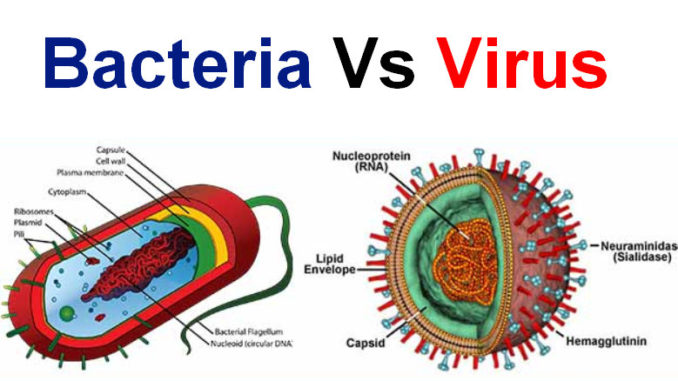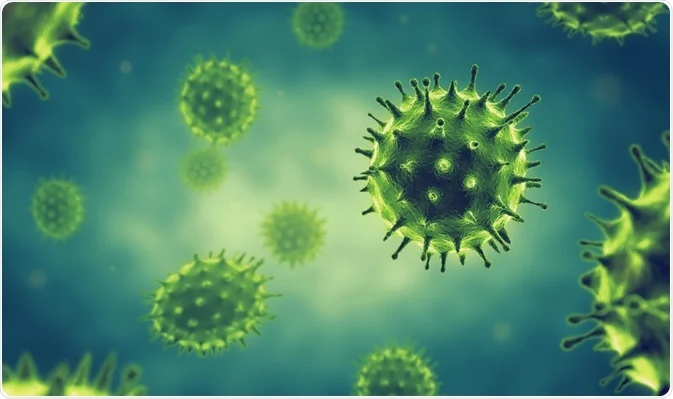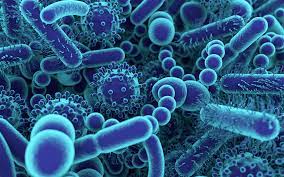Viruses are a unique type of organism. They contain DNA or RNA, and they are encapsulated in proteins that form a shell called a capsid. They can enter the body through mucous membranes, including those in your eyes, nose, mouth, and penis. They can also enter through sexual contact or from a bite from an infected animal or insect.

Viruses are acellular
Viruses are tiny organisms that cause many diseases including the flu, herpes simplex and Ebola. Unlike bacteria, viruses cannot reproduce on their own and must infect living cells to multiply. Once they enter a cell, they hijack its cellular machinery and force it to make more viruses. Viruses are also quite selective about which cells they infect, with some only targeting how are viruses different from bacteria apex and others infecting only specific types of animals. As a result, viruses are considered nonliving according to a strict definition of life.
Bacteria are multicellular organisms with a cell wall and ribosomes, while viruses are acellular. They are invisible to the human eye and tens of thousands of times smaller than bacteria. They also do not have a DNA chromosome and can only reproduce by infecting other cells. Viruses have a protein coat that encases a nucleic acid genome, which may be either DNA or RNA. The genome can be single stranded or double stranded, linear or circular.
Both bacteria and viruses impact human health and are among the most abundant organisms on Earth. However, they differ in their inherent biological properties as metabolic capacity, structure and reproduction mechanisms. Understanding these differences is important for disease prevention and treatment.
Viruses are small, non-living organisms that must infect host cells to replicate. Once inside the host cell, they reproduce by hijacking the host’s cellular machinery and then dividing themselves into copies of themselves. Viruses have a limited genome that contains instructions for making proteins, and they do not have a cell wall or ribosomes. Viruses are classified by their size, chemical composition and mode of replication. Viruses can also be classified by the type of cells they target and whether they cause infectious diseases.
They lack a cell wall
Viruses are tiny, single-celled parasites that cause diseases in people and animals. They have one RNA or DNA sequence and are small enough to pass through the cell membranes of other organisms. They also have a unique structure that allows them to replicate in healthy cells by hijacking their DNA replication machinery. Viruses are not considered to be organisms because they lack all the characteristics of life, including metabolism and cellular processes.
Bacteria are unicellular microorganisms that can survive and reproduce independently of a host. They have ribosomes, a cell wall, and other structures that are necessary for cellular metabolism. They can also survive extreme temperatures and radiation. However, viruses cannot survive in the same way as bacteria because they do not have a cell wall. They can only reproduce by infecting other cells and using their cellular machinery.
The viral genome is stored in a protein coat, which protects it from nucleases. This outer protein coating is called a capsid. Viruses can also have a lipid envelope derived from their host’s cell membrane. The viral structure is simple and does not contain ribosomes, mitochondria, or other organelles.
Unlike bacteria, viruses are not considered to be alive because they do not produce their own energy and do not have a cell wall. Rather, they get the energy they need from other cells. Viruses infect cells by attaching to their receptors and entering the cell’s nucleus. Once inside the nucleus, they take over the cellular machinery to reproduce. Eventually, the host cell will burst apart and release new viruses. Infections caused by viruses include the flu, herpes, Ebola, and the common cold. The spread of viruses can be prevented by good hygiene and vaccinations.

They lack ribosomes
Viruses are non-living microorganisms that require the cells of living organisms to survive and reproduce. They cannot survive or replicate outside of a host cell because they do not have the structure and metabolic processes of cells, such as ribosomes that create proteins. Viruses contain DNA or RNA, but they lack a nucleus and cytoplasm. They also do not have a cell wall or ribosomes, so they cannot make their own proteins. Viruses are also small—they range from 1/10th to 1/3rd the size of a bacterial cell.
Despite the fact that they are tiny, viruses do have some characteristics that distinguish them from other microorganisms. They can evolve, for example, and they can reproduce. They can also move and latch onto cells, but they cannot multiply on their own. They must gain access to a host cell and hijack its machinery.
They are very small, too small to be seen without a microscope. In fact, 500 million rhinoviruses (the ones that cause the common cold) could fit on the head of a pin. This makes them the smallest of all known microorganisms.
The basic viral structure consists of a core of genetic material, either DNA or RNA, surrounded by a protein coat called a capsid. Some viruses have a lipid envelope from the host cell membrane added to this capsid. A complete virus particle containing the capsid and nucleic acid is called a virion.
The capsid of a virus is made up of different proteins, which are encoded by the viral genome. These proteins join together to form units called capsomers. Depending on the type of virus, these capsomers have different shapes. Icosahedral capsids have twenty faces, while filamentous capsids have a thin rod-like appearance.
They lack a DNA chromosome
Bacteria are multicellular microorganisms that can survive and reproduce outside the body, while viruses require a host to survive. Viruses also differ from bacteria in that they do not produce adenosine triphosphate, which is necessary for most living organisms to grow and function. They also lack ribosomes, which are used to make proteins in living cells. Viruses are also smaller than bacteria, being ten to thousands of times smaller. They are also acellular, which means that they do not have a cell wall and cannot use ribosomes.
Viruses have a core of genetic material, either DNA or RNA, wrapped in a capsid, a protein coat. Some viruses have an additional outer lipid membrane known as an envelope. Envelopes may be spiky or smooth and help viruses to bind to and enter host cells. Once inside a host, viruses use the host’s cellular machinery to replicate and transmit their genetic information to other cells.
Most viruses are infectious agents that cause diseases, such as the flu and common colds, but they can also be responsible for more serious illnesses like smallpox and HIV. They can spread from person to person by coughing or sneezing, touching infected objects, or getting infected through bites from mosquitoes and ticks. They can also be transmitted by air or water.
Viruses do not have a nucleus, organelles, or cytoplasm, so they cannot monitor or create change in their internal environment. This allows viruses to reproduce rapidly and spread easily. Unlike bacteria, which can reproduce through binary fission, viruses can only reproduce by invading and infecting other cells. Viruses are very tiny, measuring less than one millionth of a meter in diameter. This makes them too small to be seen with a light microscope and are usually studied with an electron microscope.

They lack metabolism
The difference between bacteria and viruses is not only in their structure but also in their metabolism, replication, and more. While bacteria are able to take in organic molecules and use them for protein synthesis and other metabolic processes, viruses cannot. This is why they need to infect cellular hosts to replicate and spread.
Viruses are not considered to be living organisms, but they do have some similarities with cells. They are composed of genetic material (either DNA or RNA) and are surrounded by a protective shell of proteins. They do not have any metabolism of their own, but they do steal energy from the host cells that they infect.
While viruses do not have any independent metabolism, they do possess genes that allow them to hijack the cellular machinery of their host organisms for replication and other essential functions. These genes can be found in different locations within the viral genome and vary depending on the virus type.
They have a unique way of infecting host cells and entering them, and they can assume many different shapes and sizes. They can be spacecraft designs, spirals, cylinders, or even just balls of fat. Some are able to attach to the cell membrane of their host, and some can even enter through the cytoplasm, the fluid inside the cell.
Bacteria and viruses are two of the most common microorganisms on Earth, but they have distinct biological properties. Understanding these differences can help prevent and treat diseases caused by how are viruses different from bacteria apex. This includes illnesses such as cholera, diarrhea, tuberculosis, and measles. Some of these diseases are even life-threatening and can be fatal. This article will examine the key differences between bacterial and viral structures, genetics, metabolism, and reproduction to provide a better understanding of their similarities and differences.

